The attractive Mackaya bella has an important historical association with Trinity College Botanic Garden.
Mackaya bella is a shrub of 3-4 m, with glossy dark green evergreen leaves. Its five-petalled bell-like flowers are white to pale mauve with beautiful dark pink veins, each to about 5 cm across and held in showy open sprays from Spring to Summer.
Distribution:
It is native to eastern South Africa and Swaziland, in montane forest ecosystems.
Name and history:
Mackaya bella Harv. was named by Professor William Harvey of Trinity College Dublin (Professor of Botany TCD 1856 – 1866), former Treasurer General of the British Cape colony. Harvey explored widely in adjacent areas of the western Cape, and networked with various plant collectors in southern Africa. He compiled the first flora of South Africa. The generic name Mackaya commemorates James Townsend Mackay who was Curator of Trinity College Botanic Garden from 1806 until his death in 1862, and author of one of the first catalogues of native Irish plants. The specific epithet bella refers to the beautiful flowers.
Cultivation:
Mackaya bella makes an attractive conservatory shrub, or shrub for very mild and largely frost-free gardens, though it will tolerate light frosts. It is fairly indifferent to soil type, but leaves will be darker if grown in a slightly acidic substrate. As its natural habitat in montane forest, it is best grown in partial shade or dappled sunlight.
A specimen was presented to Dr Mary Robinson, former president of Ireland and United Nations High Commissioner for Human Rights,

The flower of Mackaya bella is used in the emblem of Trinity College Botanic Garden.



